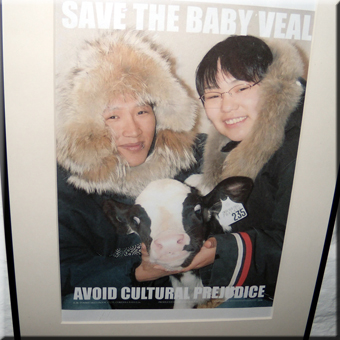A casual encounter in Greenland has an American pro-life activist gritting her teeth.
I was in the Arctic Circle, in Greenland, for some R&R and to learn about polar explorations. Having fallen in love with a pair of child’s sealskin slippers, I was poised to buy them.
“You are from the United States, no?” the woman behind the counter asked in her nicest ever tour-guide voice. “It is one country you cannot bring in the skin of the seal.”
Seeing my confused look, she explained, “It is, how you say, a populist law, only made in U.S.” She paused to make sure there was no offense. “It is not fair law. We use every part of the seal and throw nothing away.”
I remembered seeing foot-long strips of seal meat drying as they hung from porches on tiny colorful family homes for Greenlandic winter consumption and for their husky sled dogs laying around lazily in the summer sun. I recalled the stench wafting from the seal tanning factories on the harbors of tiny settlements, where warm outerwear was produced. It left me with little appetite.
“It is the baby seals that the U.S. tries to protect,” said a fellow tourist, a Dane, chiming in on the conversation. I immediately remembered learning about the baby seals in a PBS documentary.
The tour guide responded gently with a question: “But in America you can take the knife to the Inuit not born, no?” As she caressed her midriff behind the kiosk, I saw that she was pregnant.
Inuit. At a lecture I attended by and about Arctic people, I learned that Inuit is another word for human being. I wondered if Greenland is like other European countries, struggling to maintain replacement levels of population. One tiny settlement of 150 that we visited boasted that they had 27 elementary children, whom they claimed as a cherished resource.
Her obvious reference to abortion rights left me dumbfounded. As a pro-life activist, didn’t I come to the Arctic Circle to get away from debates like these?
I mumbled under my breath, “Don’t go there with me.”
S’kuse me?” she said.
“I said I don’t think that is right either-killing babies of any sort, seal or human. It’s just that in our country one has a choice to believe if a baby is human or not human.” I realized how utterly ridiculous that sounded only after I had said it.
“The baby seal is not human, yes? This is my choice to believe, no?” I really set myself up for that one.
This young bright woman should be doing something other than selling souvenirs.
But the Dane once again came to my rescue: “I think it is the clubbing of seals that the U.S. opposes.” (Please God; don’t let her ask me if clubbing a baby seal is less compassionate than scraping a human fetus from the womb with a curette.)
The conversation goes from bad to worse. “Ah. If we kill seals with the gun it would be, how do you say, political? Like the U.S. bombs in the war?” (Note to self: Vacation in Antarctica next year.)
“Actually all of these killings are wrong,” I replied. That’s me, the moralistic American.
“But some killings you can do. Because you can choose in America, no?”
I was slow on the uptake. I began to understand the posters I saw hanging on Greenland’s public buildings that read “Avoid Cultural Prejudice,” featuring two mocking Greenlanders in sealskin coats holding a young calf and the words “Save the baby veal.”
I slithered away, writing in my head a sequel to The Ugly American, starring myself.
This article appeared in the January 2011 issue of U.S. Catholic (Vol. 76, No. 1, page 37).











Add comment